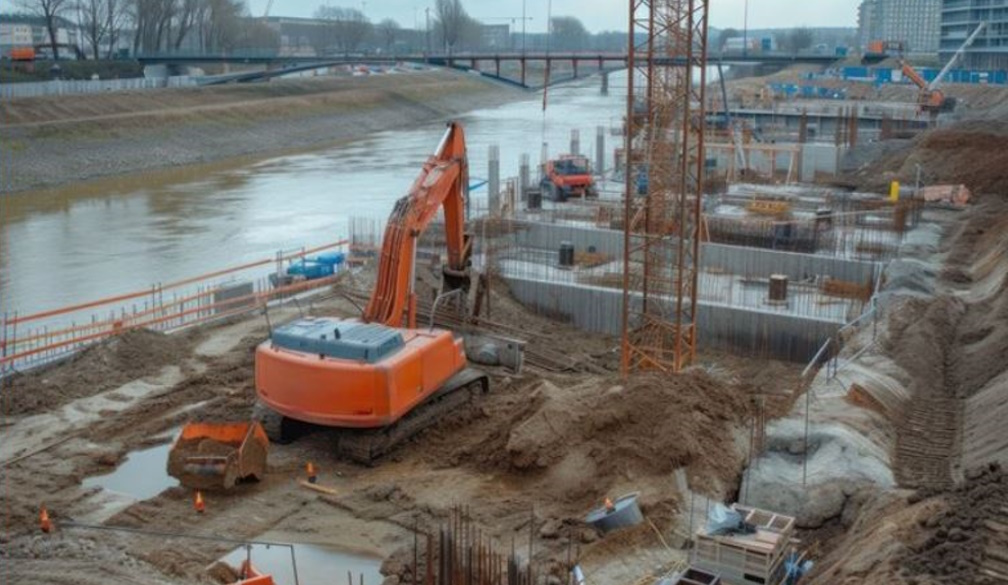Understanding the Importance of Piling in Construction

Every building needs a solid foundation. In areas where the soil is unstable or the structure is particularly heavy, traditional shallow foundations aren't enough. This is where piling construction comes in. Piles are deep foundation elements that transfer a building’s load to stronger, more stable layers of soil or rock below the surface. From residential extensions to large-scale commercial developments, piling is a fundamental part of ensuring long-term structural integrity.
What Is Piling Construction?
Piling construction involves driving or drilling piles into the ground to create deep foundations. These piles are typically made of steel, concrete, or timber, depending on the project’s engineering requirements. They bypass the weaker top layers of soil and anchor the structure to a stable layer far below, distributing the load evenly and preventing movement or settlement over time.
When Is Piling Necessary?
Piling is often required when the ground surface is soft, loose, or prone to shifting. This is common in areas with high water tables, reactive clay soils, reclaimed land, or proximity to waterways. Piling is also essential when constructing high-rise buildings, bridges, towers, or any structure with substantial vertical loads. Whether you're building on a sloped block or planning a basement, piling construction ensures the foundation is safe, reliable, and built to last.
Types of Piles Used in Construction
There are various types of piles used in piling construction, each chosen based on soil conditions, load requirements, and access. Driven piles are hammered or vibrated into the ground and are ideal for sandy or granular soils. Bored piles, on the other hand, involve drilling a hole and filling it with reinforced concrete, making them suitable for clay soils or sites with vibration restrictions. Screw piles and CFA (continuous flight auger) piles are also commonly used for residential and commercial developments where minimal disruption is key.
The Piling Process: How It Works
Piling construction starts with a geotechnical site investigation to assess the ground conditions. Engineers then design the pile layout and determine the pile type, length, and load capacity. Once installation begins, specialised equipment is used to install the piles accurately and safely. Each pile’s depth and load resistance are measured and recorded to ensure compliance with engineering standards. After installation, the piles are capped and connected to the rest of the building’s foundation system.
Piling for Residential Projects
In residential construction, piling is often required for homes built on reactive soil, near coastal areas, or on sloping sites. It’s used for new builds, house extensions, deck footings, retaining walls, and underpinning existing foundations. Modern piling equipment is compact and designed for tight access, allowing work to be completed efficiently even in built-up neighbourhoods.
Commercial and Industrial Piling Construction
For commercial and industrial buildings, the need for piling increases due to larger footprints and heavier loads. Warehouses, shopping centres, hospitals, and apartment buildings all benefit from deep foundations. With high structural demands and the potential for multi-level construction, piling construction ensures that foundations remain stable despite complex conditions. Piling also supports retaining walls, underground car parks, and basements, which are common in urban developments.
Piling in Infrastructure and Civil Projects
Beyond buildings, piling construction plays a critical role in infrastructure development. Bridges, piers, highways, tunnels, and rail lines all rely on deep foundation systems to manage dynamic loads and natural forces. These projects require highly engineered piling solutions that offer durability, long-term resistance to movement, and the capacity to withstand extreme environmental conditions.
Benefits of Piling Construction
Piling construction offers several advantages. It allows for safe construction in challenging soil conditions and enables building on land that would otherwise be unsuitable. Piles can be installed quickly, often with minimal excavation or disruption to the site. They provide excellent load-bearing capacity and are engineered to meet both current standards and future needs. When done professionally, piling reduces the risk of foundation failure, saving time and cost over the lifespan of the building.
Sustainable and Low-Impact Foundation Solutions
With growing demand for environmentally conscious building practices, many piling contractors now offer low-impact and sustainable options. Screw piles, for example, produce minimal waste and are fully removable and recyclable. Bored piling methods generate less noise and vibration, making them ideal for urban or sensitive environments. Choosing the right piling construction technique can help reduce the environmental footprint of your project without compromising on strength or reliability.
Choosing the Right Piling Contractor
Professional execution is critical in piling construction. The success of the entire building depends on the quality of the foundation. An experienced piling contractor will provide full engineering support, accurate load testing, soil assessments, and all required documentation for compliance. They’ll also have the right equipment to handle different site conditions, access limitations, and design challenges.
Piling for Future-Proof Construction
As urban areas continue to densify and new developments grow in complexity, piling construction will remain a key component of modern building. It not only addresses today’s challenges but also ensures the structure is ready to withstand future stresses. Whether it’s for a small residential build or a major infrastructure project, proper piling offers a foundation that’s stable, safe, and built to endure.
Conclusion: Building from the Ground Up with Piling Construction
No structure is stronger than the foundation it stands on. With Melbourne and other urban centres facing varied ground conditions and increasing construction demands, piling construction offers a robust, efficient, and reliable solution. By working with skilled piling professionals and selecting the right system for your project, you can ensure structural safety from the ground up.

